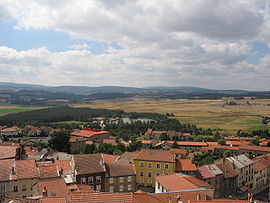This article has multiple issues. Please help
improve it or discuss these issues on the
talk page. (
Learn how and when to remove these template messages)
.mw-parser-output .hidden-begin{box-sizing:border-box;width:100%;padding:5px;border:none;font-size:95%}.mw-parser-output .hidden-title{font-weight:bold;line-height:1.6;text-align:left}.mw-parser-output .hidden-content{text-align:left}@media all and (max-width:500px){.mw-parser-output .hidden-begin{width:auto!important;clear:none!important;float:none!important))You can help expand this article with text translated from
the corresponding article in French. (March 2014) Click [show] for important translation instructions.
View a machine-translated version of the French article.
Machine translation, like
DeepL or
Google Translate, is a useful starting point for translations, but translators must revise errors as necessary and confirm that the translation is accurate, rather than simply copy-pasting machine-translated text into the English Wikipedia.
Do not translate text that appears unreliable or low-quality. If possible, verify the text with references provided in the foreign-language article.
You must provide
copyright attribution in the
edit summary accompanying your translation by providing an
interlanguage link to the source of your translation. A model attribution edit summary is Content in this edit is translated from the existing French Wikipedia article at [[:fr:Saugues]]; see its history for attribution.
You may also add the template ((Translated|fr|Saugues)) to the
talk page.
For more guidance, see
Wikipedia:Translation.
This article needs additional citations for
verification. Please help
improve this article by
adding citations to reliable sources. Unsourced material may be challenged and removed.Find sources:
"Saugues" –
news ·
newspapers ·
books ·
scholar ·
JSTOR (January 2021) (
Learn how and when to remove this message)
(
Learn how and when to remove this message)
Commune in Auvergne-Rhône-Alpes, France
Saugues (French pronunciation: [soɡ]; Occitan: Saug) is a commune in the Haute-Loire department in south-central France.
Geography
The municipality lies in the Margeride mountains, with its highest point reached at the summit of Montchauvet at an altitude of 1,485 meters.[3]
The town lies 45 km (28 mi) west of Le Puy-en-Velay.
History
A former stronghold of the Gévaudan, Saugues grew in the 12th century under the authority of the Bishops of Mende and the Lords of Mercœur. A fire in 1788 destroyed most of the town's historical centre.
It is in the mountains around and near Saugues that the famous beast of Gévaudan is said to have originated.
The Pilgrimage to Compostela
Saugues is situated on the Via Podiensis, a variant route of the Way of St. James pilgrimage to Santiago de Compostela.
Pilgrims arrive in the town from Monistrol-d'Allier, and continue to the next communes of Chanaleilles, La Dômerie du Sauvage and La Chapelle Saint-Roch.
Saugues was the traditional meeting point for pilgrims coming from Auvergne, as the path coming from Brioude made them able to avoid Le Puy-en-Velay and instead wind though the Allier river valley through Langeac, Chanteuges and Pourcheresse forest, connecting them to the secondary tracks that took pilgrims from Cantal and Puy-de-Dôme.
The Confraternity of Penitents
The Confrérie des Pénitents, or the Confraternity of Penitents, was founded in Saugues on 14 May 1652, with the permission of the Monseigneur of Marcillac and under the leadership of five of the town's nobles; Lord of Courère Antoine de Langlade, Lord of Valletta Jacques de Langlade, both canons of the local collegiate church of Saint Médard, the Royal Notary Jacques de Langlade, the bourgeois Benoît Paparic, and the apothecary Antoine Pichot. The confraternity was officially recognised by a bull from the Archconfraternity of the Gonfalone in Rome.
Sights
Famous for its woodturning of "esclops" (clogs), Saugues is rich in old houses and dominated by La Tour des Anglais, a square keep dating back to the 13th century. The tower takes its name from an episode of the Hundred Years War, when a troupe of English Routiers besieged the town.





